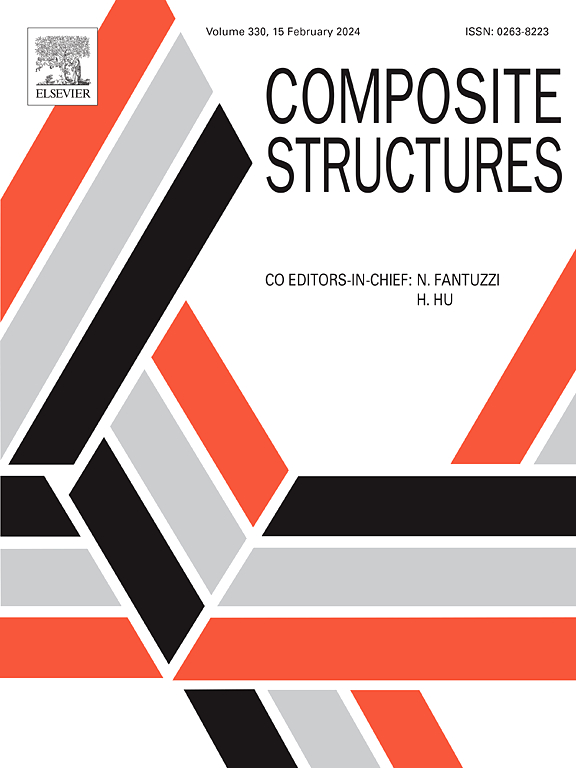Tunable mechanical properties of the 3D anticircular-curve transversal-isotropic auxetic structure
IF 6.3
2区 材料科学
Q1 MATERIALS SCIENCE, COMPOSITES
引用次数: 0
Abstract
This work studies a three-dimensional anticircular-curve transversal-isotropic auxetic structure (3D-ATAS) with tunable Poisson’s ratio (υ) and tunable Young’s modulus (E) on the basis of hexagonal symmetry in the transverse plane using the anti-deformation method by the design of inclined rods as circular-curve rods in the opposite direction of the deformation (under compressive loading). By using the energy method, expressions of υ and E of 3D-ATAS are acquired, and based on the periodic boundary conditions, υ and E of 3D-ATAS are parametrically researched through numerical simulation and uniaxial compression experiments. The effects of anticircular-curve rod thickness t, anticircular-curve rod width b, and anticircular-curve cross-section angle θ to υ and E of 3D-ATAS are investigated. The tunable ranges of υ and E of 3D-ATAS are predicted, and the wide range of E is attained. Compared with the 3D circular-curve transversal-isotropic auxetic structure, E of 3D-ATAS is significantly enhanced in different directions, and the maximum enhanced up to 10 times. In the same way, both υ and E of 3D-ATAS are transversal-isotropic.
三维反圆弧曲线横向各向异性辅助结构的可调机械特性
本研究在横向六边形对称的基础上,利用反变形方法,通过将斜杆设计成与变形方向相反的圆弧杆(在压缩载荷作用下),研究了具有可调泊松比(υ)和可调杨氏模量(E)的三维反圆弧横向各向异性辅助结构(3D-ATAS)。利用能量法获得了 3D-ATAS 的 υ 和 E 的表达式,并基于周期性边界条件,通过数值模拟和单轴压缩实验对 3D-ATAS 的 υ 和 E 进行了参数化研究。研究了反圆弧杆厚度 t、反圆弧杆宽度 b 和反圆弧截面角度 θ 对 3D-ATAS 的 υ 和 E 的影响。预测了 3D-ATAS 的 υ 和 E 的可调范围,并实现了宽范围的 E。与三维圆曲线横向各向异性辅助结构相比,三维-ATAS 的 E 在不同方向上都有显著增强,最大增强可达 10 倍。同样,3D-ATAS 的 υ 和 E 都是横向各向异性的。
本文章由计算机程序翻译,如有差异,请以英文原文为准。
求助全文
约1分钟内获得全文
求助全文
来源期刊

Composite Structures
工程技术-材料科学:复合
CiteScore
12.00
自引率
12.70%
发文量
1246
审稿时长
78 days
期刊介绍:
The past few decades have seen outstanding advances in the use of composite materials in structural applications. There can be little doubt that, within engineering circles, composites have revolutionised traditional design concepts and made possible an unparalleled range of new and exciting possibilities as viable materials for construction. Composite Structures, an International Journal, disseminates knowledge between users, manufacturers, designers and researchers involved in structures or structural components manufactured using composite materials.
The journal publishes papers which contribute to knowledge in the use of composite materials in engineering structures. Papers deal with design, research and development studies, experimental investigations, theoretical analysis and fabrication techniques relevant to the application of composites in load-bearing components for assemblies, ranging from individual components such as plates and shells to complete composite structures.
 求助内容:
求助内容: 应助结果提醒方式:
应助结果提醒方式:


